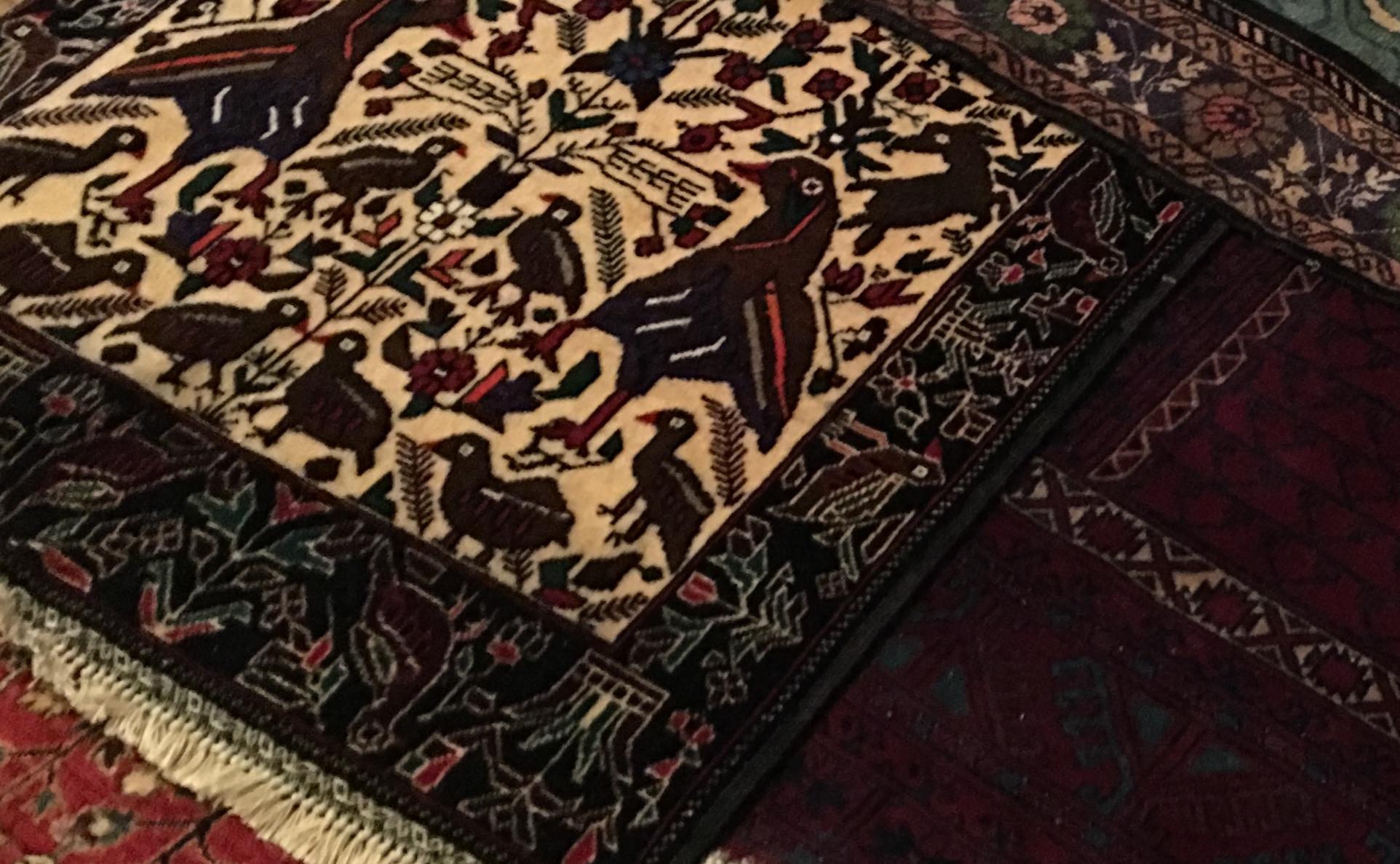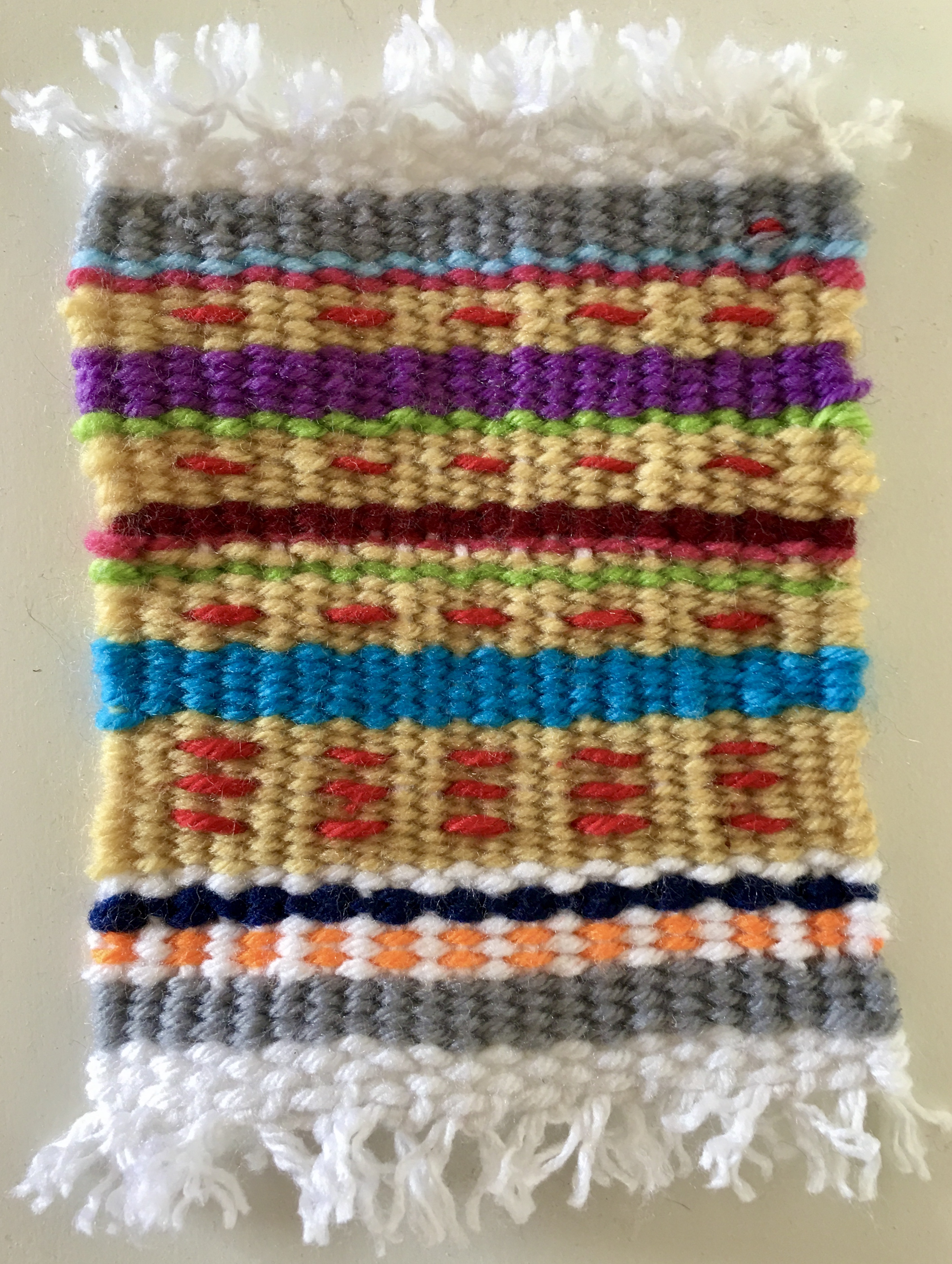
Reading for the Weaver
Amplifying Agency through a Material Rhetoric Methodology
Nancy Small with Riyaz Bhat
Writer's Statement
My Embodied Somewhere
by Nancy Small
When researchers seek to make "exotic" cultures and language practices familiar, they may unknowingly (or deliberately) assimilate, consume, and appropriate the epistemological traditions of the "other." Their subject selection reveals that whiteness increases scholarly authority, or the ability to make claims about cultural groups, regardless of one’s degree of participation or history of contact with said groups. Yet...this is a problem when researchers representing historically marginalized identities—whose selves and communities are affected by their work—remain invisible in their efforts to identify structures of oppression that prevent them from being seen. (Lockett et al., 2021, p. 25)
This problematized "politics of location" may seem to make our task impossible; it may make us wonder if we can claim anything for our research. But instead of falling into inaction and despair, we move forward with the awareness that we can only approximate an understanding . . . with a willingness to pursue the difficulties inherent in a politics of location accompanied by an equal willingness to be unrelentingly self-reflective. (Kirsch & Ritchie, 1995/2003, p. 143)
This webtext is a labor of love. It also exists in fraught transcultural spaces in which white people like me—particularly academics and feminists (and white feminist academics)—have not always proven ourselves to be ethical actors. Indigenous writers and feminists of color have written and continue to write about the dangers of Western perspectives, white feminist assumptions, cultural appropriation, and biases (both conscious and unconscious) that cause harm, even violence (e.g., Royster, 1996; Smith, 2012). If I engage the disembodied, (faux) objective academic voice or what is acknowledged as "the view from nowhere," then I deny the impact of my embodied rhetorical perspective (Knoblauch, 2012); therefore, I offer this brief sideline essay as "my embodied somewhere" in an effort to assert space for reflexive accountability within our academic genres (Kirsch & Ritchie, 1995/2003). I have included it separately because while I must be present in the main text, I don't want to turn the spotlight off of the framework and Central Asian women weavers. The following introduces me as a writer/researcher whose own identity, experience, and positioning situate and influence this project.

Currently, I hold the privileged position of being a newly tenured Associate Professor of English at the University of Wyoming, but prior to arriving here in 2016, I spent almost 25 years as a lecturer at a research institution. From that experience, I know what it feels like to be a non entity (nontenure track, nonresearch active, back then a nonPhD), diminished or rendered nonexistent in a rigid elitist hierarchy. I know what it's like to have one's contributions deemed unworthy of presence in larger narratives of what matters and what is valued in academic markets. These decades of experience motivate me. The last six years with that previous university were spent teaching at a branch campus in Doha, Qatar, where I lived with my family. In those transformative spaces, I came face to face with the staggering effects of transnational whiteness and capitalist caste systems, and my complicity as a white U.S.-born expatriate. I've written about the colonizing nature of that branch campus (Small, 2017b); the complicated, paradoxical positionings of women and educators in those spaces (Small, 2022b); as well as the need for a shared transnational and intercultural research ethic (Small, 2022a). That mindset motivates me.
Living in the Middle East introduced me to incredibly generous people, including folks from all over the world eager to share their stories in the spirit of cross-cultural exchange and learning. My collaboration and enduring friendship with Riyaz Bhat started from that impulse and extends to this webtext collaboration, and although I've written the text, he generously contributed his expertise, consulted over it, and reviewed it. Riyaz's makercentric positioning inspires me, and I am accountable to him.
When my family and I began planning our move back to the United States, the idea for this project emerged out of a sense of impending loss: loss of close contact with Riyaz as friend and expert, loss of living in transformative intercultural spaces, loss of diverse multicultural connections. Tribal rugs metonymically represent those larger yet ephemeral relations. Generations of toxic geopolitics—fueled by proxy wars in which the United States continues to play a substantive role—make visiting Central Asia too dangerous, and tribal people should not be the objects of the tourist gaze. Their textiles are created in private spaces.
I invested in books about tribal rugs to fill the knowledge gap but soon became frustrated by the "thingification" (Yancy, 2008, p. 2) of the weavers. As a scholar, I studied storytelling and narrative in an effort to relegitimize them as forms of research (Small, 2017a), and as I listened to Riyaz tell me about how tribal women weavers designed, created, and improvised, I began to think about how a rug might be read as a story purposefully and rhetorically recentering the weaver, relocating the power of agency with her rather than with forces of market value. To complement the academic side of my rug reading, I sought out other means of continued self-education. In 2012, I took up knitting during the anxiety of my PhD program, marking my entry into the fiber craft world. Later, with these rugs in mind, I learned basic weaving to get a sense of a simplified version of the process, the engineering, the warp and weft, the movements, the many choices to be made. Two years ago, I learned how to spin on a wheel, marveling at the physics and transformation of roving into thread and the twisting convergence of the plying process. My attempts at weaving and spinning provided healthy, humbling lessons. I have also incorporated weaving as material rhetoric into my teaching through an assignment where students use a simple loom and colorful yarn to tell an autobiographical story. These activities have been transformative.
My standing as a tenured academic in a Western economy and writing for an academic journal privilege my voice. These factors create greater difficulties in tribal women's ability to "constantly return the gaze . . . from colonized to the colonizer" (Ruiz, 2021, p. 55). To address these limitations as an outsider to tribal life and to enact my accountability, I have collaborated with an expert, done my homework, studied tribal rug samples, and crafted my words carefully, purposely focusing on rhetorical strategies for recentering agency rather than romantically orientalizing or critiquing tribal norms and practices. Instead, I critique the ways master narratives have erased these women, devalued them in the hierarchy. In other words, by focusing on Central Asian artisanal contexts, I don't claim to achieve decolonizing ends (see Itchuaqiyaq & Matheson, 2021). Rather, I aim to complicate or disrupt the capitalist colonization of women weaver's talents. My webtext does not claim to be fully grounded in the tenets of Critical Race Theory (Martinez, 2020, p. 9), although any project where differences of positionality and power are at play demands a carefully critical eye. I don't speak for tribal women but instead seek to test a process through which their artisanal creations might be a means of speaking for themselves. And most broadly, I hope to share a potential method where others—separated from us by time, space, and difference—might have their stories recognized as well.